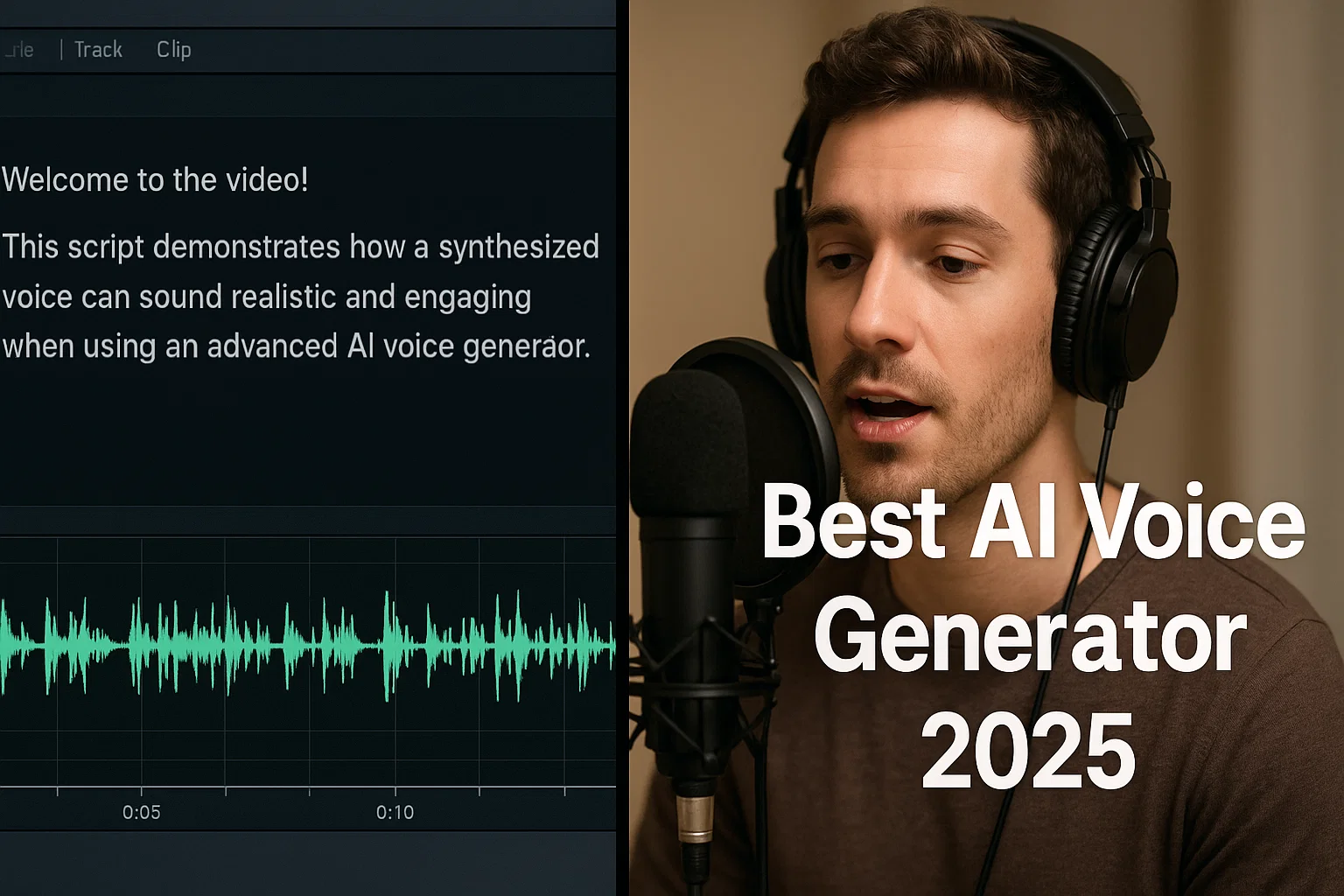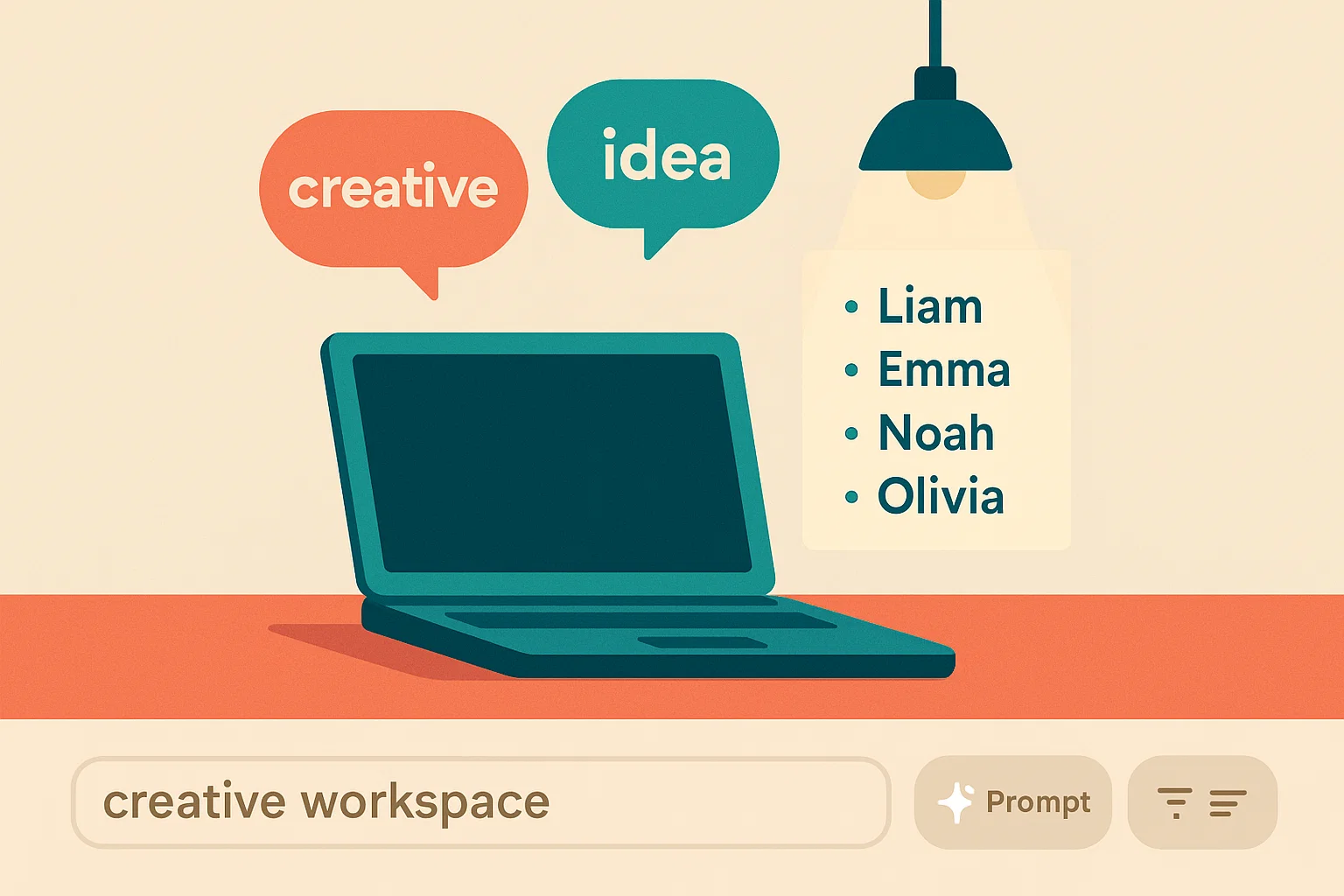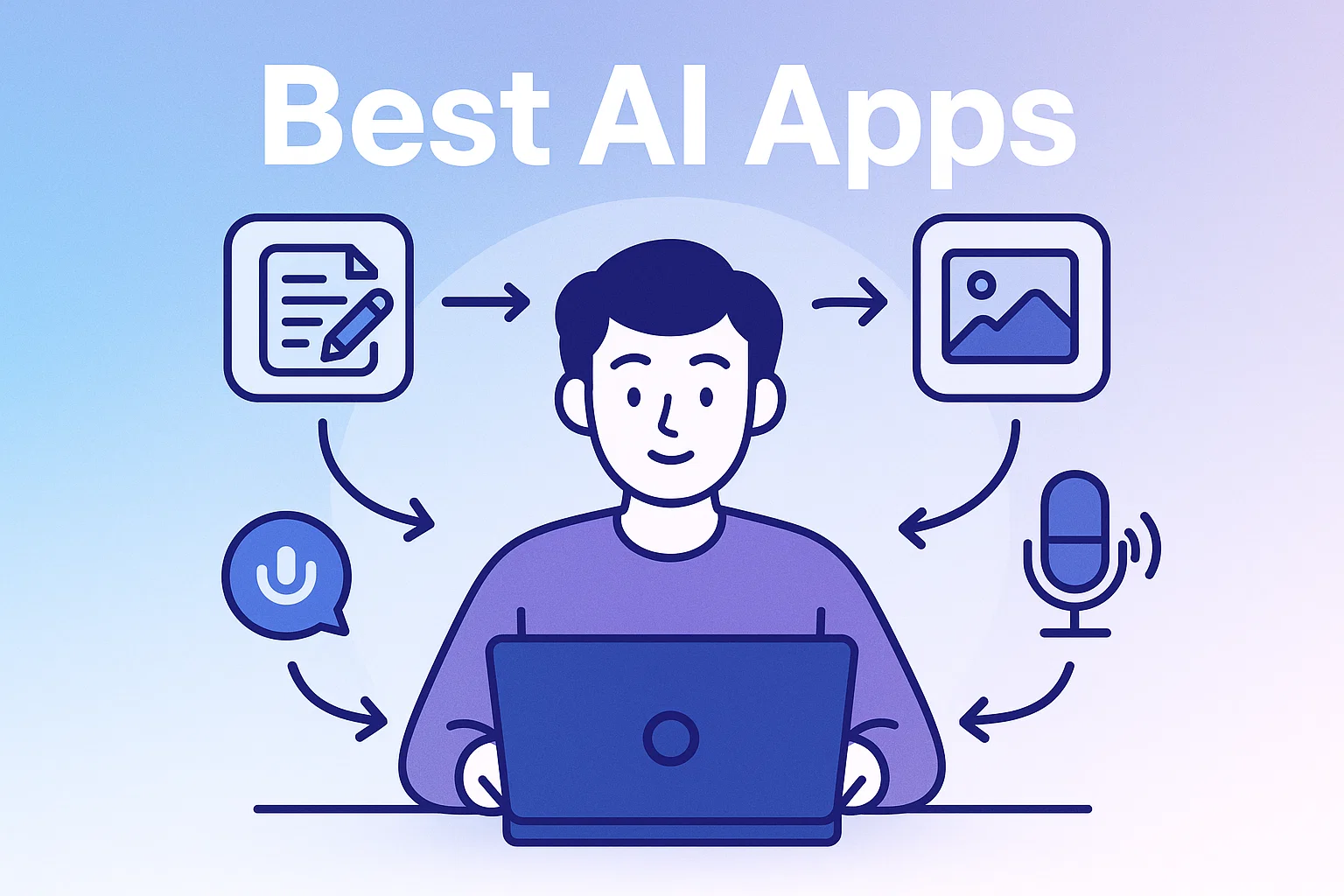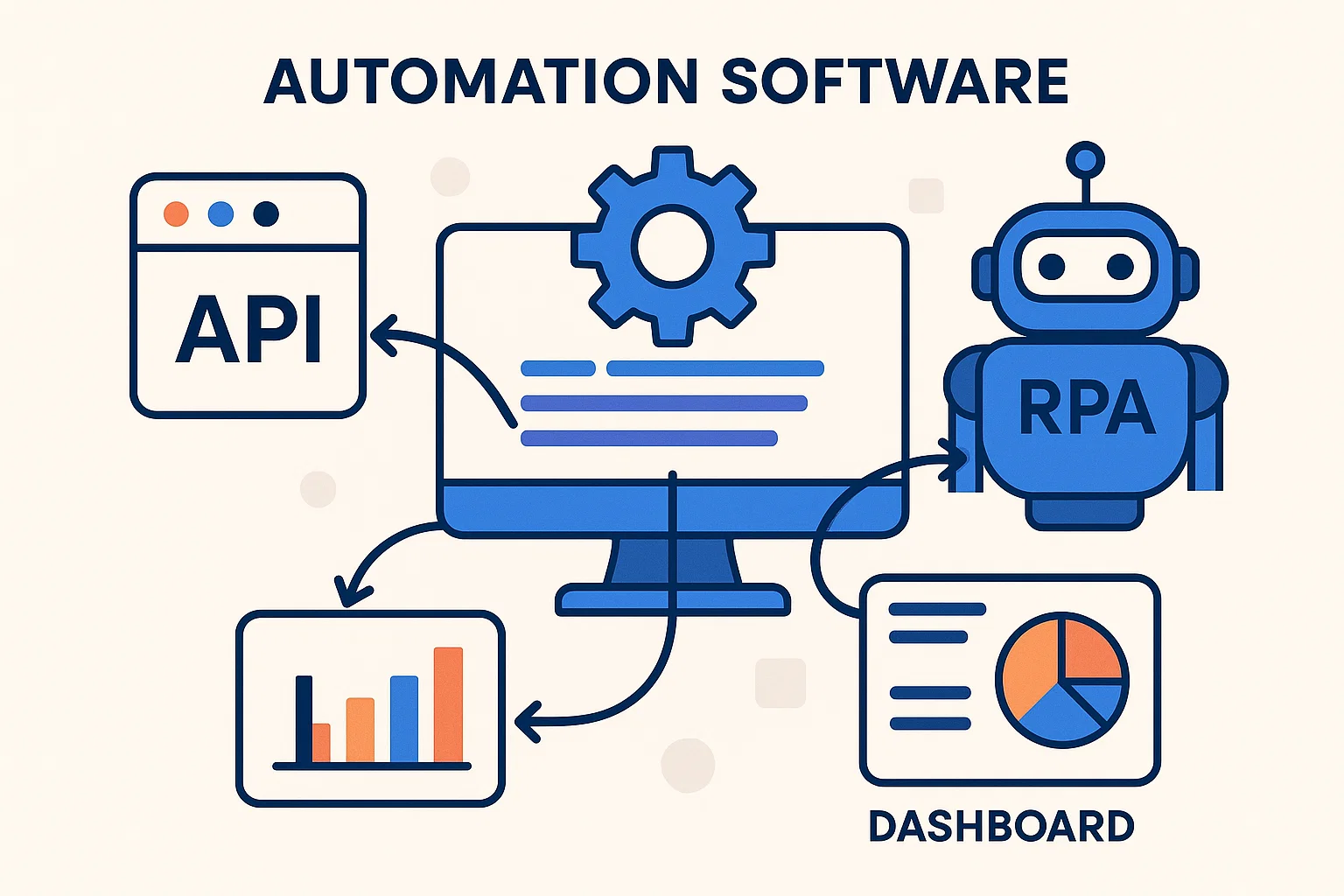If you want natural-sounding voiceovers, lifelike narration, or a custom brand voice without hiring a voice actor, an AI voice generator is the shortcut. In 2025 the field is crowded — from creator-friendly web apps to enterprise-grade voice-cloning platforms and massive cloud TTS services. The good news: the right tool depends on what you actually need (YouTube voiceovers vs. real-time agent voices vs. secure voice cloning). This post walks through the best AI voice generator options, the tradeoffs (quality, cost, licensing, safety), and practical advice for picking one that fits your workflow.
I’ll keep it practical: comparisons, budget options, audio tips, and short setup recipes for common projects (podcasts, e-learning, IVR, marketing videos). Sprinkle in LSI keyword variations like text-to-speech, voice cloning, synthetic voice, neural TTS, and AI narrator so this is useful whether you’re a creator, product manager, or developer.
“Pick the voice that feels human, not the one that flexes the fancy demo.”
— small piece of buying advice that saves time and refunds
Quick shortlist — who’s worth checking right now
These are the tools I keep seeing recommended for real projects in 2025:
- ElevenLabs — all-in-one creator & API-first TTS with great voice quality and cloning options. Zapier+1
- Murf.ai — creator-friendly studio with many ready-to-use voices, good for marketing, explainer videos and slide narration. Murf AI+1
- Resemble.ai — strong on voice cloning, enterprise features, and deepfake detection / trust tooling. Good for production-grade custom voices. Resemble AI+1
- Cloud providers (Google Cloud TTS, Azure Neural TTS, OpenAI’s TTS/Gemini speech) — best when you need scale, many languages, or tight platform integration (real-time agents, telephony). Google Cloud+2Microsoft Azure+2
Each of these serves a slightly different audience — creators, enterprises, developers, or real-time systems. I’ll unpack when each shines and what to watch for.
What makes an AI voice generator “best”?
Not everyone needs the same features. Here are the key axes to evaluate:
- Naturalness & expressiveness: How human does it sound? Look for prosody controls, emotional inflections, and word-level emphasis.
- Custom voices & cloning: Do you need to clone an existing voice or create a brand voice? Check sample quality and cloning data requirements.
- Controls (SSML / word-level): Can you tweak pauses, pitch, or phonemes with SSML or a visual editor?
- Latency & real-time capability: For live agents or phone systems, sub-second generation matters.
- Language & accent coverage: How many languages and regional variants are supported?
- Commercial rights & pricing: Check licensing — some free demos aren’t cleared for monetized content. Also compare pay-as-you-go vs subscription vs credits.
- Safety & deepfake controls: Does the vendor offer consent/cloning safeguards or detection tools? This is crucial when cloning voices.
- API & integration: Do they offer an API, SDKs, and batch synthesis for your workflow?
“Quality is a mix: model skill + good SSML + thoughtful editing.”
— production tip for better-sounding TTS
Deep dives — when to pick which platform
ElevenLabs — best for creators and flexible cloning
ElevenLabs has become a go-to for creators who want great voice quality, quick editing, and a generous free tier for experimentation. It supports voice cloning, a rich voice library, and an API for automation — making it handy for podcasts, audiobooks, and narration. If you prioritize lifelike timbre and fast iteration, ElevenLabs is a strong starting point. Zapier+1
Best for: YouTube creators, indie podcasters, rapid voice prototyping.
Watch for: Credits/pricing for long-form audio; check commercial usage terms.
Murf.ai — easy studio for marketing & presentations
Murf focuses on a polished studio flow: paste your script, pick a voice, tweak emphasis, and export. It’s friendly for non-developers and integrates with presentation tools and video workflows — great for explainer videos, demos, and corporate training voiceovers. Pricing tiers scale for teams. Murf AI+1
Best for: Corporate videos, slide narration, explainer voiceovers.
Watch for: If you need deep voice cloning or real-time latency optimizations, consider additional options.
Resemble.ai — clone-first, enterprise-grade
Resemble emphasizes custom voice creation, security, and detection tools for misuse. If you need a production-quality, branded voice that can be integrated into IVR systems or personable agents, Resemble’s enterprise features (voice authentication, deepfake detection) matter. Pricing reflects that enterprise focus. Resemble AI+1
Best for: Brands, studios, IVR/assistant voice cloning with compliance needs.
Watch for: Upfront cost and legal consent for voice cloning.
Cloud TTS & real-time options — Google, Microsoft, OpenAI
If you need massive language coverage, telephony-grade latency, or to run in a cloud ecosystem, look at Google Cloud TTS, Azure Neural Text-to-Speech, and OpenAI’s TTS / Gemini speech. These platforms provide robust SDKs, native SSML support, and enterprise SLAs — and they’re continuously improving voice quality with neural models. Use these for large-scale production, multi-region delivery, or integration with other cloud services. Google Cloud+2Microsoft Azure+2
Best for: Real-time agents, global IVR, large-scale localized content.
Pricing & licensing — a practical reality check
Pricing models vary: per-character, per-minute, credits, or subscription. Quick rules:
- Small creators: start on free or low-tier plans to audition voices (ElevenLabs and Murf both offer free tiers). ElevenLabs+1
- Teams: look for seat-based or team plans with collaboration and asset management. Murf and some ElevenLabs plans support team features. Murf AI+1
- Enterprises: expect per-minute pricing, SLAs, and custom contracts (Resemble and cloud providers are common). Resemble AI+1
Also—important—check the commercial use fine print. Some vendors require explicit licensing for redistribution (a video you monetize, an audiobook you sell). Don’t assume demo audio equals distribution rights.
Ethics & safety: cloning, consent, and deepfakes
Voice cloning unlocks power and risk. Before you clone a voice:
- Get explicit, documented consent from the speaker.
- Keep an audit trail of consent and who can access the voice model.
- Prefer vendors that support voice abuse detection or watermarking. Resemble and other enterprise vendors now offer detection/mitigation features. Resemble AI
“Cloning a voice without consent is not just unethical — it’s legally risky.”
— important reminder
Many platforms also provide “safety-first” workflows: human review, identity verification for cloning requests, and deepfake detectors. Use them when you build public-facing or monetized voice services.
Production tips — make AI voice sound human
- Use SSML (pause, emphasis, prosody) to make sentences breathe. Cloud TTS and most providers support SSML. Google Cloud+1
- Break long text into chunks — long blocks can sound flat; short paragraphs let the TTS add natural inflection.
- Add subtle background texture — a gentle room tone or low-volume bed track can make speech sit naturally in a mix.
- Edit word-level pronunciation (phonemes) for tricky names. Tools like Resemble and ElevenLabs give fine-grain control. ElevenLabs+1
- Run A/B voice tests with real listeners for your audience — small swaps in cadence can change perceived trustworthiness.
“AI voice is the tool. Good scripts and edits make it sound human.”
— audio craft tip
Real-world workflows (quick how-tos)
YouTube voiceover — fast, low-cost
- Choose a creator-friendly tool (ElevenLabs or Murf). ElevenLabs+1
- Paste script, set voice and speed, tweak SSML for pauses.
- Export high-bitrate WAV and run through a normalizer & de-esser.
- Add background music at −18 dB under the voice. Done.
IVR/assistant — low latency & compliance
- Use Azure or Google for low-latency streaming and phone integrations. Microsoft Azure+1
- Create concise prompts and pre-generate static prompts (less latency).
- If cloning an agent voice for brand, use an enterprise vendor and collect legal consent. Resemble AI
Audiobook / long-form — high quality
- Use a high-quality model and sample voices on long passages (ElevenLabs/Resemble). ElevenLabs+1
- Generate in chunks, then run a final pass for consistent loudness and pacing.
- Confirm commercial rights before you publish.
Common gotchas & how to avoid them
- Hidden fees: some services look cheap per-minute but add charges for voice cloning or higher-quality audio. Read the pricing page carefully. ElevenLabs+1
- Legal surprises: default demo clips are not always cleared for commercial reuse; check license terms.
- Model drift: voice models can be updated by vendors — keep local backups of approved audio or voice configuration.
- Privacy: if you send sensitive scripts to a cloud API, verify data retention policies (some vendors keep voice data for model training unless opted out).
Where the market is heading (brief look forward)
- Better real-time models: expect sub-second neural TTS for live assistants (Microsoft and Amazon have been pushing in this space). The Verge+1
- On-device voices: a push to run models locally for privacy and latency (OpenAI and some open-source efforts are making local inference easier). Windows Central
- Ethics & watermarking: more vendors will add audible or inaudible watermarks and cloning consent flows to combat misuse.



